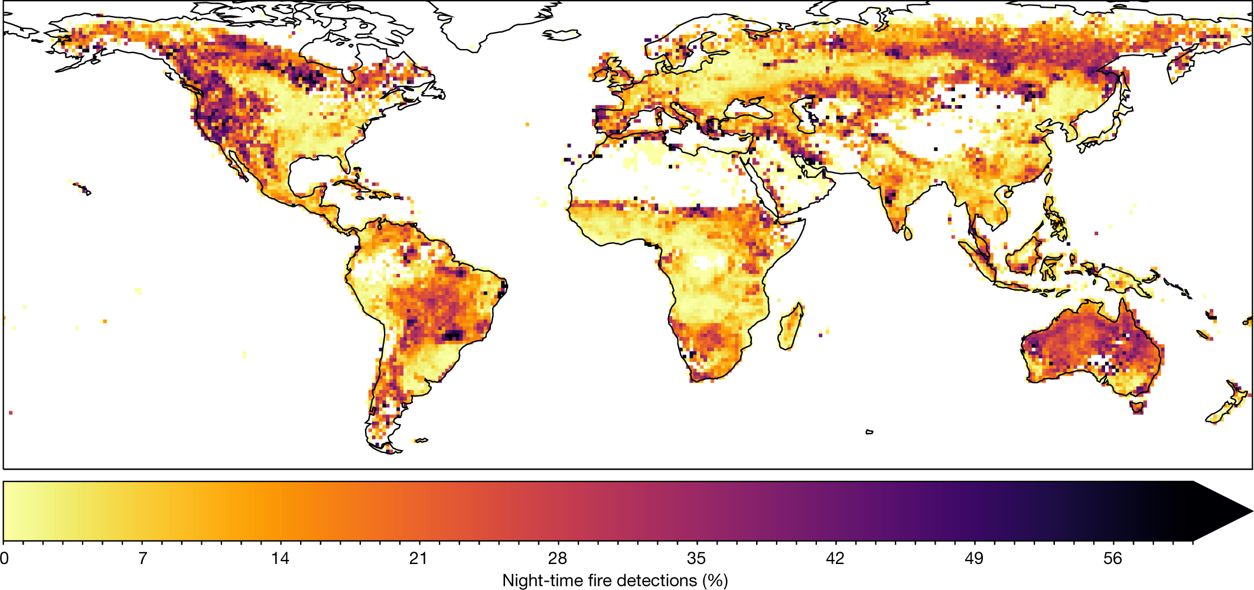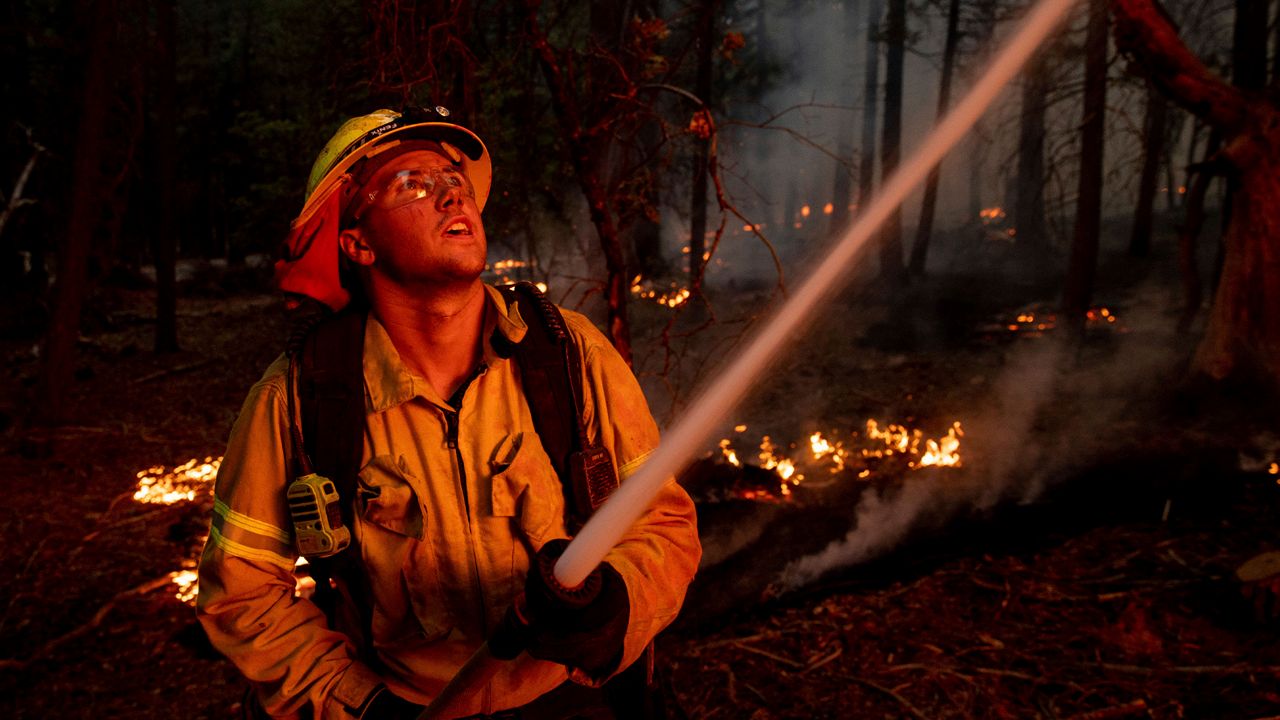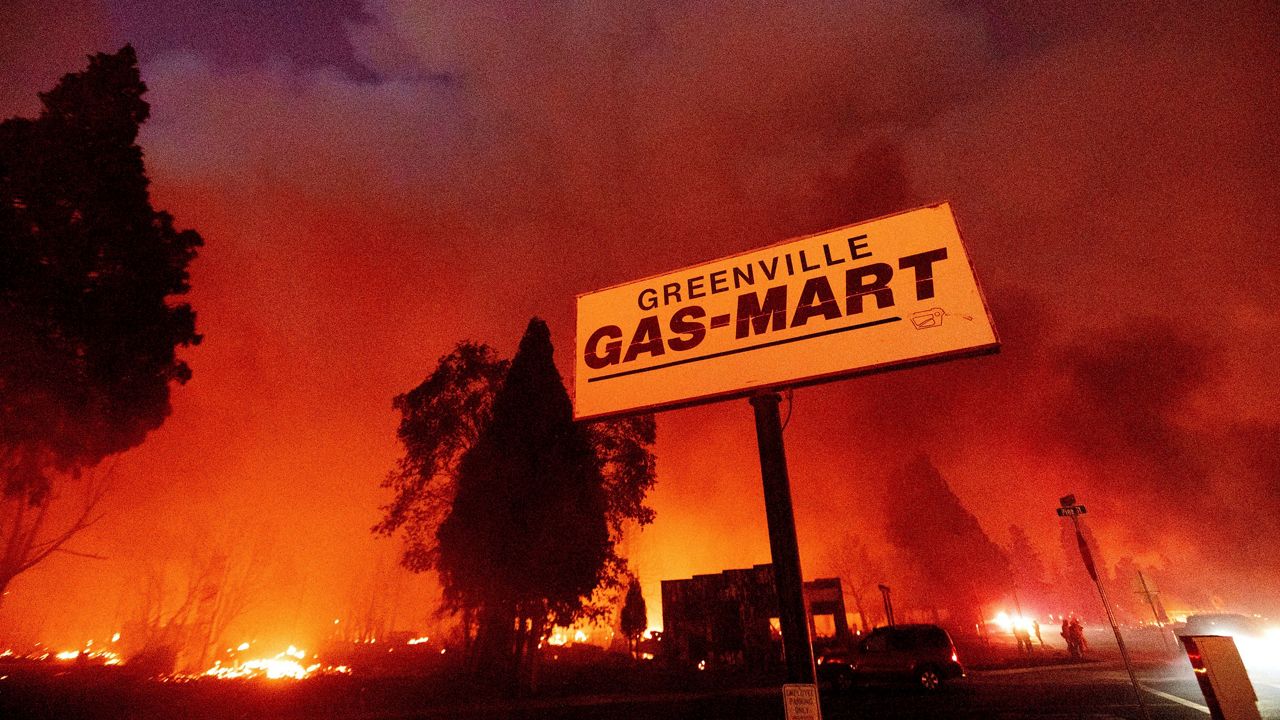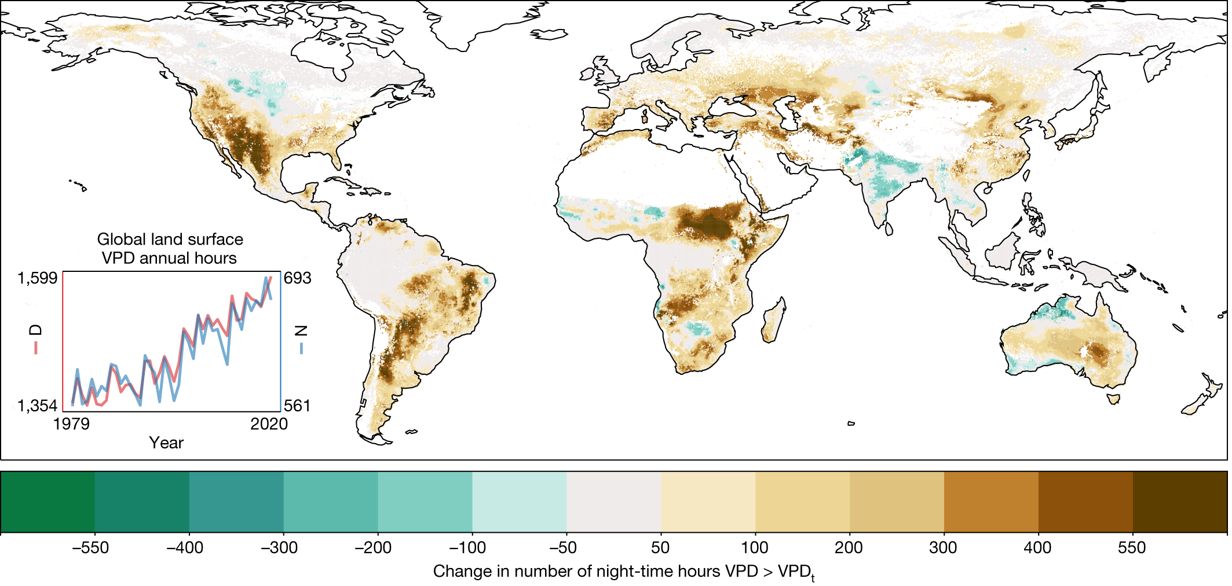Wildfires are a force of destruction, but a new study highlights fires are burning more intensely at night.
After the sun sets, firefighters would usually gain some ground surrounding fires, but that’s not case anymore.
A study by the Cooperative Institute for Research in Environmental Sciences’ (CIRES) Earth Lab at the University of Colorado Boulder says nighttime fires are increasing in intensity around the world.
Dr. Adam Mahood, a post-doctoral researcher at CU Boulder, worked the on the wildfire study and told us this trend has become more noticeable over the last couple of years.
“It’s becoming more common for fires not to go out at night and escape in the forest,” said Dr. Mahood.
How are fires becoming more intense?
Earth Lab scientists are using satellite images and climate data from wildfires across the Western Hemisphere to measure the vapor pressure deficit or VPD.
Vapor pressure deficit is the difference in how much moisture is in the air and how much moisture that air can hold.
(Earth Lab/CIRES University of Colorado Boulder)
“It’s essentially a better version of relative humidity… it’s essentially like the exact idea of how hot and dry it is, is encapsulated in one number,” said Dr. Mahood.
The researchers there detected more fires happen at night because they are above the VPD threshold.
Breaking down the numbers
Through satellite analysis from 2003 to 2020 of tens of thousands of wildfires across the world, night fires increased by 7.2%. However, for the western United States, night fires increased by 28%.

(Earth Lab/CIRES University of Colorado Boulder)
Plus, 40 years of data from 1979 to 2020 found that world increased flammable nights per year by an additional one week. For the Western U.S., flammable nights increased by 11 nights, which is a 45% increase.
“Because temperatures are increasing across the globe everywhere, things are not only getting warmer but they’re also getting drier. If you try to start something on fire. It’s easier to start something on fire when they are dry and hot than if they’re cold and wet,” Dr. Mahood said.
Fighting nighttime wildfires
The results of the study do not surprise firefighters. On the fire lines, they know more wildfires are flaring up more at night.
“We’ve seen a marked increase in both in night and daytime over the last few years,” said Cal Fire Battalion Chief Jon Heggie.
He points to the drought in California having an adverse effect on containing fires in the state. Chief Heggie told Spectrum Networks the drought created an environment where dry fuels are susceptible to changes in humidity.
“When we have less water vapor in the air at nighttime, those fuels remain dry through the evening, therefore increasing our fire activity at nighttime.”

A firefighter battles the Dixie Fire at night on Sept. 1, 2021. (AP Photo)
NOAA National Weather Service Fire Weather Chief Scientist Robyn Heffernan agrees fire activity is increasing overnight.
In her role, Heffernan provides fire weather forecasting for all wildland fires and dispatches incident meteorologists to areas of need to coordinate with local firefighters and personnel to contain fires.
She says the incident meteorologists are seeing extended burn periods.
“Now we’re seeing fire operations extend into the overnight hours because fires are still threatening families, communities and those types of things in the nighttime hours. They’re still active and firefighters are trying to protect the community and those assets.”
Nighttime wildfires
There are plenty of examples of wildfires burning more fiercely at night, including Dixie and Tubbs Fires from California and the Marshall Fire from Colorado.
The Dixie Fire in July 2021 is one example that comes to mind for Cal Fire Chief Heggie last summer.
“On numerous evenings, we had numerous large-scale runs of fire, what we would typically consider the most quiet time of fire activity.”

The town of Greenville goes up in flames in Aug. 2021. (AP Photo)
The Dixie Fire burned over 963,000 acres and was 100% surrounded back in October 2021.
Fire control
Firefighters have adapted to getting containment of night fires. Instead of mobilizing air resources, they focused more on ground efforts to build fire lines and contain the flames.
“We’re seeing first hand… it’s another reality we’ve been dealing with and we have been adapting to that. Understanding that the firefight doesn’t slow down and putting in the right resources and fire personnel in those locations to ensure they can battle those fires and ensure for public safety.”
Scientists suggest we have increased fire behavior at night because there are hotter and drier nights, meaning that nighttime cooling isn’t happening.
“It doesn’t necessarily mean the peak temperature of the day has to be significantly warmer. If we are not cooling off at night, it’s having a negative impact on fires.”

